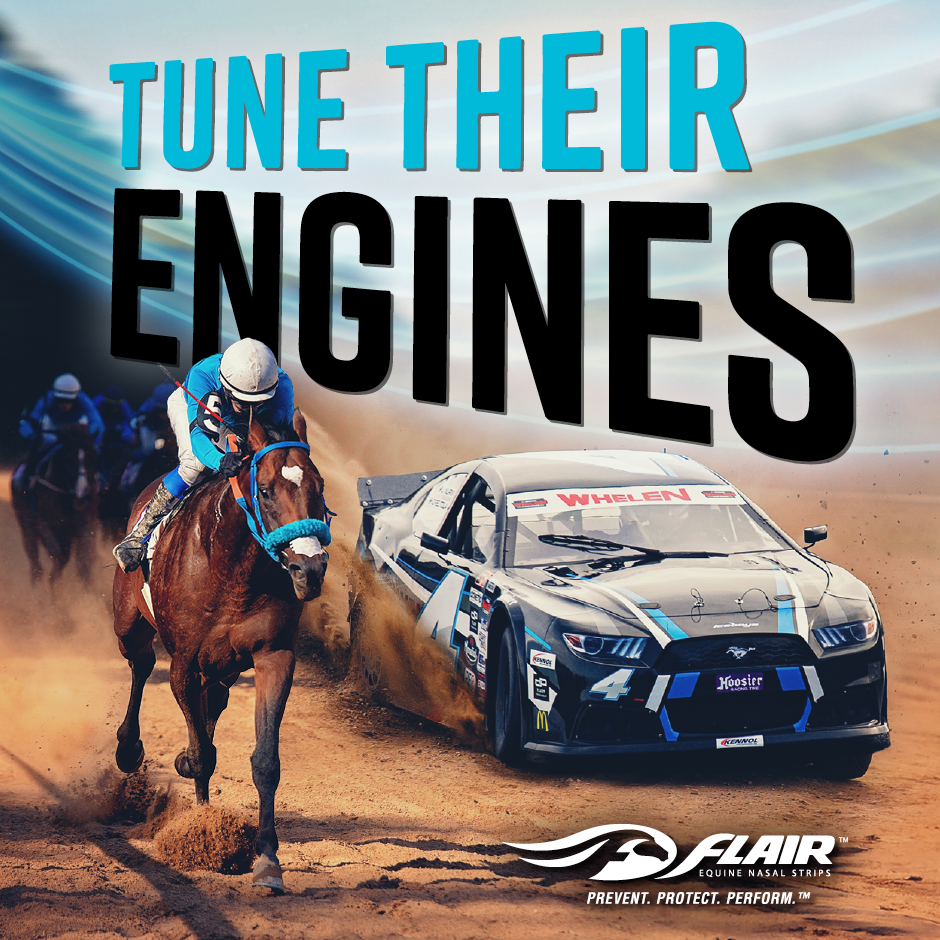Similarities Between Equine Respiratory System and NASCAR
Aug 30th 2019
 What’s the difference between a performance horse and a race
car? Well, aside from the obvious fact that one is living, and one is not, when
you look at both through a conceptual lens, you’d see that they are actually
quite similar. After all, there’s a reason race cars are gauged in horsepower.
What’s the difference between a performance horse and a race
car? Well, aside from the obvious fact that one is living, and one is not, when
you look at both through a conceptual lens, you’d see that they are actually
quite similar. After all, there’s a reason race cars are gauged in horsepower.
But now let’s take a look under the hood.
Race cars are powered by engines and performance horses are powered by hearts and muscles. Like an engine, hearts and muscle require efficient intake and utilization of oxygen for optimal performance. Even the smallest deviations in design or efficiency can drastically impact the result of a race. Like the fuel intake system of a NASCAR engine, the respiratory system of a performance horse is crucial to competition day performance.
Beneath the surface, a horse during exercise essentially goes into overdrive. Depending on the intensity and duration of the activity, a horse’s respiratory rate can hop up nearly tenfold, increasing from 12 to 20 breaths per minute (at rest) to as high as 180 breaths per minute during exercise. With this acute fluctuation in a horse’s breathing pattern, their own internal “engines” need to be running with optimal efficiency in order to keep up with the stress of their physically demanding competitive environments.
Within a NASCAR race car, engines are designed to have as little resistance as possible. Intake and exhaust inputs and outputs are tuned and tested to provide maximum efficiency at certain engine speeds. In order to achieve this, every gear and gizmo is designed to have very low resistance, allowing gases to flow through the pipes without any obstructions. This gives the driver the ability to push the vehicle harder without having to worry about any sort of repercussion, such as engine failure or overheating. Learn more on how to keep your horse from overheating.
Like fuel intake systems of a well-oiled machine—bringing in high volumes of air and fuel every second—the nostrils and nasal passages of a performance horse are vital to their respiratory functioning as they are obligate nasal breathers (meaning they must breathe through their nostrils). However, this is problematic as the nasal passages are the narrowest pathways in a horse’s upper respiratory system and create the greatest resistance to incoming air.
FLAIR® Equine Nasal Strips support horses' nasal passages and tune the upper airways by reducing airway resistance and improving oxygen delivery to the lungs for optimal heart and muscle performance.
FLAIR Strips are clinically proven to reduce upper airway resistance, so horses breathe easier, conserve energy, reduce EIPH and recover faster. Read more about how you can keep your horse's lungs protected on race day.





